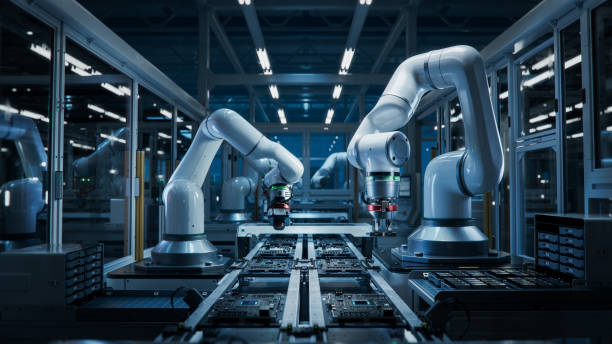Envisioning the Future of Industrial Robotics: A Comprehensive Analysis
As we sit on the cusp of a new era in industrial operations, robotics is at the forefront, promising transformative change. This article delves into the emerging trends in industrial robotics, providing a detailed backdrop of its evolution, current applications, and potential future impacts.

Tracing the Evolution of Industrial Robotics
The genesis of industrial robotics can be traced back to the early 1960s, with the introduction of Unimate, the first industrial robot. Fast forward to the present day, and we see robots performing tasks with unparalleled precision and speed, reshaping manufacturing lines and industrial processes. This section examines the journey of industrial robotics, punctuated by key milestones and disruptive advancements.
Current Trends and Applications
In the present scenario, industrial robotics has transcended beyond manufacturing to sectors such as healthcare, logistics, and agriculture. Robots are now equipped with advanced sensors, machine learning algorithms, and AI capabilities, enabling them to perform complex tasks with minimal human intervention. This section delves into these contemporary applications, illustrating the versatility and potential of robotics in different industries.
The Impact of Robotics on Business and Industry
The adoption of robotics in industrial operations has far-reaching implications. On one hand, it enhances productivity, reduces errors, and leads to cost savings. On the other hand, it poses challenges such as job displacement and cybersecurity risks. This section provides a balanced perspective on the benefits and challenges of robotics, offering insights into its impact on business and industry.
The Future of Robotics: Predictions and Possibilities
With advancements in technology, the role of robotics in industrial operations is set to expand. As we look ahead, we can envision robots working collaboratively with humans, performing tasks in hazardous environments, and even making autonomous decisions. This section explores these future possibilities, grounded in current research and industry trends.
Harnessing the Potential of Robotics
- Invest in employee training to ensure a smooth transition towards robotic operations.
- Leverage robotics for tasks that require high precision, speed, and repeatability.
- Consider the ethical and social implications of robotic deployment.
- Prioritize cybersecurity to safeguard robotic operations from potential threats.
Wrapping Up
Industrial robotics is poised to redefine the future of business and industry. As we navigate this new landscape, it is imperative to balance the opportunities it presents with the challenges it poses. By understanding the trends and anticipating the future, businesses can strategically harness the potential of robotics, fostering innovation and driving growth.






